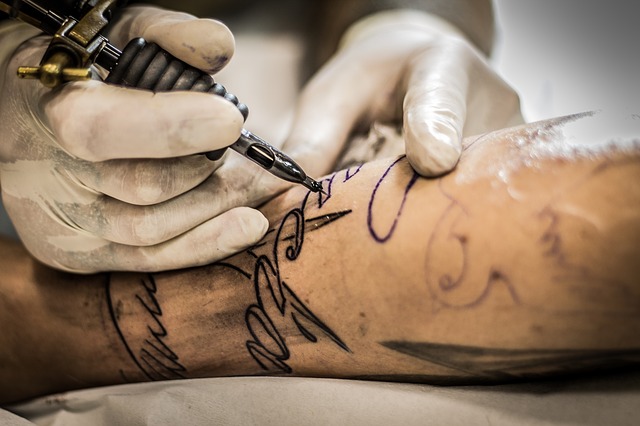Cultural appropriation is a concept which has arisen in post-Colonial discourse and is taken particularly seriously in the United States, where people with different cultural backgrounds coexist.
What do we mean by this term? Cultural appropriation occurs when people who are part of a nation and race perceived as ‘dominating’ take up cultural practices typical of minorities; even worse if such practice is connected to rituals or religion.
 A typical example can be the notorious photoshoot in Germany’s Next Top Model in 2014. On this occasion, top model Heidi Klum and other models posed as Native American women, wearing feather headdresses and other garments typical of this culture. What infuriated the Native American communities is the fact that neither the models nor the photographer had any knowledge of the way of life they were representing, so, in the view of the critics, the result of the photoshoot was a vile fetishization of the figure of the Indian woman. To make matters even worse, the feathers on the headdresses and the face-paint used by some Native Americans are deeply sacred, and only a few honorable people are allowed to wear them. So, we have mocking, de-sacralization and sexualization of an oppressed community: a case of cultural appropriation by the book (for more read https://lastrealindians.com/heidi-klums-redface-photo-shoot-by-ruth-hopkins/lastrealindians/).
A typical example can be the notorious photoshoot in Germany’s Next Top Model in 2014. On this occasion, top model Heidi Klum and other models posed as Native American women, wearing feather headdresses and other garments typical of this culture. What infuriated the Native American communities is the fact that neither the models nor the photographer had any knowledge of the way of life they were representing, so, in the view of the critics, the result of the photoshoot was a vile fetishization of the figure of the Indian woman. To make matters even worse, the feathers on the headdresses and the face-paint used by some Native Americans are deeply sacred, and only a few honorable people are allowed to wear them. So, we have mocking, de-sacralization and sexualization of an oppressed community: a case of cultural appropriation by the book (for more read https://lastrealindians.com/heidi-klums-redface-photo-shoot-by-ruth-hopkins/lastrealindians/).
Cases of claimed cultural appropriation occur mostly in fashion and other artistic fields, like music; in fact, not many artists can end their careers without being accused of it at least once. Among the alleged culprits of this incorrect practice we have Marc Jacobs and his hairstyles inspired by Zulu Bantu knots, Nicki Minaj taking up the so-called “chola glamour” – a style typical of Latino girls – and Kim Kardashian who has her hair braided in Fulani braids. The critics of these VIPs claim that the styles they are so mindlessly adopting are typical of people who have suffered from oppression from the stars’ very race: the Zulu and Nigerian people – inventors of Bantu and Fulani hairstyles – were made into slaves, the Chola girls were mocked for their very appearance and marginalised in American cities. These very practices, however trivial they may seem, represent for many people a way to preserve a cultural identity, to reconnect with a long-lost country of provenience. It is not fair, they claim, that outsiders take them up and turn them into trends or commercial products.
Maybe it is because I am Italian, but I find the concept of cultural appropriation particularly difficult to comprehend. After all, I come from old Europe, “the most skeptical of all wives, God forgive her!” to say it with Nietzsche. In old Europe, to put it simply, the more you get copied the cooler you are; we have been doing this since the Roman Empire. Many foreigners take inspiration from the Italian diet and fashion: we are proud of that. It must mean that our food or clothes are good, so our only problem is counterfeiting. On the other hand, Italians are increasingly passionate of sushi, mehdi tattoos or Indian scarfs.

Don’t get me wrong: mocking and humiliating is always wrong, as is making fun of things other people consider holy. Respect must come first in every interaction, and before all fashion.
Having said this, what is difficult for me to grasp is the turning point between a practice free for all to draw from, and one ‘owned’ by a specific group. For example, women from Arabia to India have dyed their hair with henna for at least one thousand years, sometimes associating it with rites for good fortune: am I, a Caucasian woman, allowed to dye my hair with henna? Or, since what my “race” actually invented are industrial, ammonia-based dyes, I can use only those? Is it fair to be offended by the way others style their hair?
Leaving my hair aside for a moment, what is important is the implication of the idea of cultural appropriation in a multicultural society. It goes without saying that people concerned with this concept have progressive and multicultural sympathies. That is why it is relatively common, among people of western origins, to accept blindly every claim of cultural appropriation, and sometimes to go as far as accusing each other with this unfair practice. But if we want to go beyond the realm of radical-chic etiquette and really work for a more equal society, we have to challenge the belief that culture can be owned by individuals, or that it diminishes if shared, even unwillingly shared.
We should not take for granted that the superficial take-on of traditional practices for the sake of fashion does not bring some individuals to a more insightful appreciation of the whole culture they come from. Maybe it is time we were less concerned with what is on people’s head and more with what is inside them, but, alas, thoughts are less easy to spot and are not coloured in bright-red henna.

ih Victoria
International House
Ancona|Jesi
Tel/Fax: (+39) 071 2867491
Tel/Fax: (+39) 0731 648 328
e-mail: info@ihtvc.it

